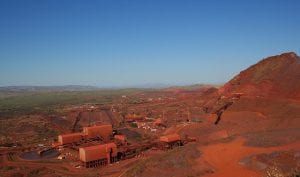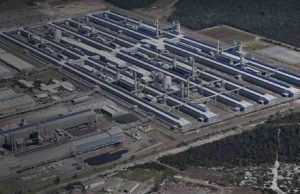Nearly two years on from the state-wide blackout triggered when freak tornadoes tore down major power lines, South Australia remains a punching bag for the federal government, and anti-renewable campaigners everywhere.
New federal energy minster Angus Taylor can’t stop taking about it, repeating endlessly how South Australia’s 50 per cent renewable share has been a disaster, causing high prices, blackouts and, well, who knows what!
But here’s the thing: South Australia’s renewable share has likely proved the opposite to what’s being claimed. Since the events of the summer of 2016/17, there have been no major outages. In fact, it’s quite possibly been the most reliable grid in the country.
Not only that, it is clear that the renewables boom has brought down prices, and lowered emissions – and it is now looking at a revitalisation of its manufacturing base, powered by cheap renewables.
This will include the three key ingredients – wind, solar and storage – and the state and its business actors have plans to take this model interstate and – with the introduction of renewable hydrogen – even to export markets.
Taylor and others in the right wing of the Coalition – and the usual media suspects – seem intent on using South Australia as a basis for their scare campaign to try to prevent other states, Victoria and Queensland, from following suit, as the Australian Energy Market Operator suggests they might (see graph below).

But the local conservative government in South Australia seems remarkably unfazed.
Indeed, the Steven Marshall-led Liberal government actually appears excited by the fact that the state will, according to AEMO’s Integrated System Plan, based on current policies and building intentions, reach around 73 per cent renewables by 2020, and 100 per cent by 2025.
(The term 100 per cent renewables means generating the equivalent of its demand from wind and solar. It will, of course, remain connected to the rest of the grid, which means sometimes it will import power from other states, although mostly it will export).
In the budget handed down this week, the theme was was clearly “pro-transition”, and that was the clear intent of the government and its advisors – so much so that it was hard to tell the difference between the Liberals and the previous Labor government on most issues.
Labor had its $150 million Renewable Technologies Fund that was focused on the storage needed to complete the transition to a renewable power grid.
The Liberals have $180 million earmarked for much the same thing – in their case, a $100 million grant program for home batteries that aims to boost security and reduce prices for all consumers, and another $50 million for large-scale storage. And that is over and above the largely dispersed Labor initiative.
South Australia is now clearly one of the leading grids in the world in the uptake of both wind and solar, the integration of that output, and the adoption of various storage and other smart technologies to manage it.
Think of the Tesla big battery, the world’s biggest solar tower and molten salt storage plant, a whole group of different battery applications for “island-ing” and creating micro-grids, at least half a dozen different pumped hydro projects, the use of hydrogen for storage and grid balancing, and the combination of wind, solar, batteries and hydrogen on a grand scale.
It’s also looking at marshalling and orchestrating what is already the highest penetration of rooftop solar in a major grid anywhere in the world.
Within a few years, the amount of electricity produced by the state’s 800MW of rooftop solar will equate to the amount of demand in the state at certain times of the year.
As AEMO notes, that needs careful management, but it is an opportunity rather than the catastrophe portrayed by Taylor, Alan Jones and the cast of conservative Chicken Littles. The state government has committed $30 million for just that purpose.
Indeed, the only really big difference between Labor and the Liberals (now they are in power) is the push for a new inter-connector providing an added link from the state with the rest of the main grid.
The favoured route is to Wagga Wagga, and AEMO says that if this is done, then gas will likely play a minimal role in the future grid – by 2040, it may account for a mere one terrawatt-hour of gas a year.
That’s a fraction of what is used now. And there will be no need for “baseload coal”, not even “fair-dinkum” baseload – as energy minister Taylor likes to call it.
And little wonder the South Australia Liberals would be as keen to embrace the renewables-dominated grid as the Labour government they inherited it from.
We have run so many stories over the years pointing out some of the nonsense said about South Australia, mostly reminding people that South Australia has always experienced high prices because – as the main utility said at the time – it has lousy coal resources and expensive gas. But it’s also got a heap of wind and solar potential.
Like many other regions that have also embraced renewables, they have done it for an economic reason – historically high prices usually caused by the lack of cheap fossil fuels locally, and the lack of competition in the local market.
The Climate and Energy College’s Simon Holmes à Court summed up some of the benefits, and misconceptions, quite nicely in a piece written for The Guardian earlier this week.
We borrowed some of those graphs, and got a few more from his colleague Dylan McConnell, to explain the situation here.
As Holmes à Court points out: “The truth is that South Australia is an international model of success for energy transition. That such a statement goes so far against the orthodoxy shows the depravity of our national energy conversation.”
He notes that the total “unserved energy” i.e. blackouts caused by insufficient power, has amounted to the grand total of 1.9 “load” minutes since 2010. It was 16.8 minutes in the decade before that.
Then there is the issue of prices, which seems to be the number one issue of the time.
This graph illustrates the fact that South Australia has always had high prices, it is why the state generator started considering wind energy almost half a century ago, and when the then ETSA lamented the lack of competition more than a decade ago.
But while over the last decade average wholesale prices have declined in real terms in the state with the most renewables, they have gone up in the states with the least.
 Not only have wholesale prices been reduced, but so have emissions, measured in absolute terms, a reduction of 56 per cent (above) and in emissions intensity (below), which shows the comparison with the other predominantly coal-dependent states.
Not only have wholesale prices been reduced, but so have emissions, measured in absolute terms, a reduction of 56 per cent (above) and in emissions intensity (below), which shows the comparison with the other predominantly coal-dependent states.
As Holmes à Court notes, that reduction in emissions intensity is five times as fast as the reduction in NSW, Victoria and Queensland.
And that takes us to the energy mix. There are two ways to observe this, in the graph below which shows the contrast between 2008 and 2018.
 And in the next graph below, which shows the evolution year on year – courtesy of McConnell.
And in the next graph below, which shows the evolution year on year – courtesy of McConnell.
But the next graph is the really scary one. We published it last week, when we wondered if Taylor really was in a position to stop the energy transition that clearly horrifies him.
It came from the results presentation of the dominant grid owner in the southern states, Spark Infrastructure. It is its graphic visualisation of the ISP assumptions made by AEMO.
Not only does it show the share of fossil fuels in South Australia declining to a mere 1TWh, it shows even more dramatic change in NSW – because that is the state with the ageing “fair dinkum” coal generators that Taylor wants to keep in the system.
And which everyone else realises would be better off in the scrap heap and replaced by renewables and storage – not just for the sake of emissions, but for prices, and economic opportunity.
South Australia has shown the way, and will continue to do so.











